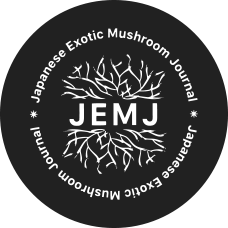Login or Subscribe
You must be logged in to access this content
Subscribe for free access to Japanese Exotic Mushroom Journal and gain insider knowledge on effective cultivation methods for Japanese mushroom species. Elevate your skills with expert tips and innovative technologies to master the art of growing Japanese exotic mushrooms.
◆ Discover exclusive Japanese mushroom cultivation techniques
◆ Learn innovative methods to enhance mushroom quality and yield
◆ Tap into Japan's rich heritage for unique growing insights
◆ Discover exclusive Japanese mushroom cultivation techniques
◆ Learn innovative methods to enhance mushroom quality and yield
◆ Tap into Japan's rich heritage for unique growing insights
Subscribe Now for Free Login
Cooking With Kinoko
A Primer to Oyster Mushrooms
I thought long and hard how to approach this issue’s Cooking With Kinoko segment. There were two roadblocks: first being that oyster mushrooms have so many variants, and second, both oyster and king oyster mushrooms are so versatile in cooking that it might be easier to isolate two dishes they don’t go well in rather than pick two that they are suitable for. Whereas shiitake required a fair amount of careful consideration to their texture, smell, flavor, and how to cook with them, oyster mushrooms have been difficult to write about in the opposite sense: they go so well with almost anything and have a mild but meaty smell and flavor, and unobtrusive texture/mouthfeel. The two varieties are an excellent window piece, as even people who dislike mushrooms may find them palatable.In terms of vegan cooking, both oyster and king oyster mushrooms are extremely useful, and for that reason I think growers can anticipate steady increases in demand over the coming years. Both are particularly good at replacing pork or shellfish in a dish, and in Japan are used in carbonara pastas, pizzas, stir-fries, tempura, and occasionally in hot pot dishes like nabe or in the prefectures of Hokkaido and Shizuoka, in miso soup. In addition to being easy to cook and having a good texture/flavor profile for replacing meats, oyster and king oyster mushrooms also contain some of the highest concentrations of protein, B-vitamins and several times the ergothioneine content of any commonly cultivated mushroom variety. As an easy sell to eco and health-conscious consumers, interest in oyster and king oyster mushrooms is booming in Western markets, especially since they are comparatively easy to grow (with the caveat that carbon dioxide regulation is very important for king oyster cultivation), adapt easily to a number of growing systems, and can grow on other forms of organic waste (such as coffee grinds, beer lees, paper pulp, etc.).The main point of consideration with both oyster and king oyster mushrooms is that their fragrance and taste are both very mild. Neither will radically change a dish or add the kind of depth that shiitake will. To put it more colloquially, they are great supporting actors, but won’t steal the show. As such, I find they often work best with dishes that already have a lot of flavors and strong aromas. Especially when cooking mushrooms for people (like children) who are picky eaters or don’t typically like mushrooms, oyster and king oyster work well as low-key ingredients that cut back (or replace) meat, strengthen the flavors that already exist, and boost the nutrition content.Many ideas I had for a “Western” dish using oyster mushrooms simply replaced button mushrooms in a dish with oyster mushrooms. Take the American Mushroom Institute’s project “The Blend”; any recipe in it could replace finely diced button mushrooms with oyster mushrooms and work just as well. My inner Miranda Priestly (from The Devil Wears Prada) kept sarcastically saying things like “Beef Stroganoff with Oyster mushrooms? Groundbreaking.” But for the sake of impact, I have worked to highlight oyster and king oyster mushrooms as an ingredient in a dish that doesn’t already have an image as a "mushroom dish." Yes, oyster mushrooms and king oyster mushrooms are a safe bet to replace or supplement button mushrooms, but to further bring the two varieties into the mainstream is going to take more than just appropriating the handful of occasional dishes consumers in Western markets already commonly use mushrooms in.The conditions for the recipes this series highlights are: the dish is flexitarian and replaces some meat with mushrooms and otherwise can be adjusted for vegetarian or vegan dishes fairly easily, and is easy to prepare. There is value in a recipe series not designed by a pro-chef for a target audience of cooking hobbyists. A lot of food marketing and wellness lifestyle marketing fails to connect to a wider audience, including many working families who have busy schedules, because the focus is on elevating trendy and impressive dishes, which then require very complicated, multi-step recipes, a variety of advanced cooking skills, experience and sometimes special equipment that isn’t in the home of every typical, middle-class consumer, on top of substantial time commitments. “Everyday Mushrooms” is the approach I've adopted for this particular series, and the recipes are all ones that I've tweaked, cooked multiple times, and vetted personally as a working-father. I aim to show potential consumers that cooking with mushrooms can be quick and simple enough for everyday consumption for busy people and people who don’t have extensive cooking skills (or in my case, patience).





 1-2-13 Honmachi, Komoro city, Nagano prefecture, Japan 384-0026
1-2-13 Honmachi, Komoro city, Nagano prefecture, Japan 384-0026